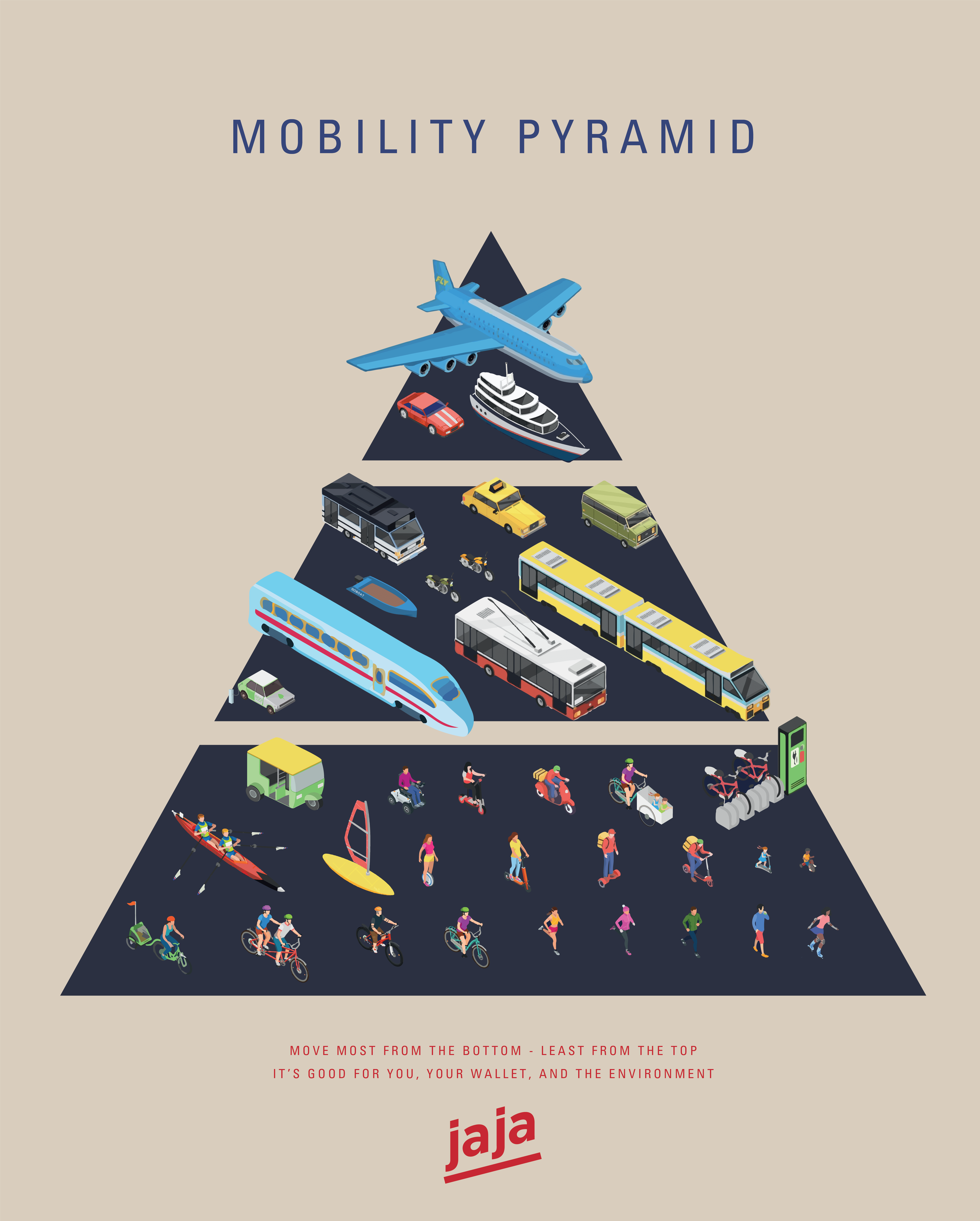Perspective
Urban mobility
Smart cities
Urban infrastructure planning
+1
Moving together towards green mobility


Europe is continuing to experience an increase in private car ownership, including Denmark even though as Danes, we consider ourselves people with a great bicycling culture. In Denmark, around 40% of all car trips are less than 10 kilometres, and even for trips as short as 2-5 kilometres, cars are often the go-to mode of transportation. Commuting trips hold around 1.08 people per car, creating poor utilisation of resources and inefficient transportation with delay and congestion.
With this challenging backdrop, Denmark was and still is a pioneer in the realm of bicycling. However, it is crucial that we continuously develop and nurture this culture, integrating walking and bicycling as the preferred modes of transportation for shorter journeys, thus fostering a broader urban culture.
Moving Together
Given that walking and biking are individual transportation forms, we also need to strengthen the culture of Moving Together. Together, because we need to get everyone onboard to move towards green mobility. Together, because moving together (car-pooling, car-sharing, public transport, etc.) is the most efficient way to move a lot of people. And, finally, together, because walking, bicycling, and public transport contribute more to urban life in streets and cities than private cars. With the emergence of new mobility services and digital platforms that enable new ways of sharing, it is crucial to incorporate these advancements into a comprehensive transit-oriented development strategy. We need to build upon our robust public infrastructure and expand the concept of public transport into shared mobility. This entails facilitating
a dense network of mobility points across all scales, from the train stations to the neighbourhoods and into the local streets, creating a seamless transition between modes of transport and at the same time creating attractive and social hubs across the city.
A multifaceted strategy
Changing our mobility patterns, and thereby our everyday routines, poses a challenge, given that homo sapiens is a species of habit. Therefore, we need to utilise the entire toolbox of change, including cultural, structural, and behavioural change. The Mobility Pyramid is a tool for cultural change. Inspired by the food pyramid, the Mobility Pyramid communicates, beyond black and white terms, that occasional use of cars and planes is acceptable — just like having sweets or fast food in moderation — but that we must prioritise the healthiest options to keep our cities healthy. It encourages people to choose active modes of transportation at the bottom of the pyramid wherever possible, so people “move most from the bottom – least from the top”.
The expansion of private car ownership in the last century has been supported by an extensive expansion of road infrastructure. Instead of dismantling it, starting a structural change from scratch, we need to find smart ways to restructure it to solve tomorrow’s mobility challenges. This could involve dedicating two lanes in a four-lane arterial road solely to public transport or creating one-way streets with bicycle paths in cities for more environmentally friendly options. Private cars will remain a necessity for longer trips that public transport cannot cover.
However, we should focus on electrifying these journeys and implementing car-sharing initiatives. Lastly, behavioural change needs to be an integrated part of future mobility planning. Altering behaviour is not only cost-effective but also minimises resource consumption. Learning from the commercial industry, we can employ techniques such as nudging, gamification, and incentivisation attaching a reward to a given behaviour. The commercial industry would not use marketing budgets if it didn’t work. We need to do adopt a similar approach within mobility. In conclusion, moving towards green mobility is essential for the health of the planet and its inhabitants but the change progresses at a slow pace. To accelerate change across all sectors of the industry, we need to expand into a multidisciplinary approach.
Resource intensive modes of transportation such as cars may be charged for their space requirement and material consumption, and by simultaneously investing in more sustainable transportation options, we can reduce greenhouse gas emissions, improve public health, and create more liveable cities for all.
You should consider reading
solutions
Combined heat and power production
+6
CopenHill: The story of the iconic waste-to-energy plant
20 November 2024solutions
Urban infrastructure planning
+2
SuperBlockify
15 November 2024publications
Combined heat and power production
+9















